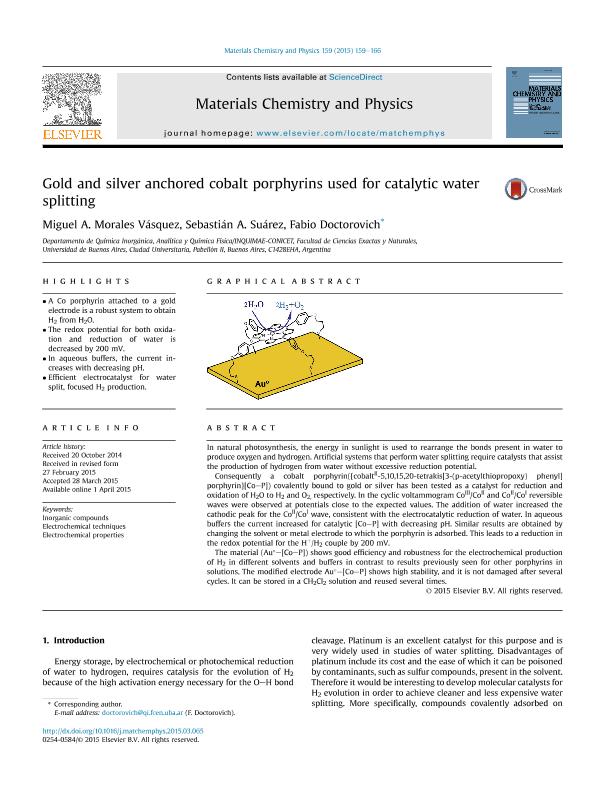Artículo
Gold and silver anchored cobalt porphyrins used for catalytic water splitting
Fecha de publicación:
06/2015
Editorial:
Elsevier Science Sa
Revista:
Materials Chemistry and Physics
ISSN:
0254-0584
Idioma:
Inglés
Tipo de recurso:
Artículo publicado
Clasificación temática:
Resumen
In natural photosynthesis, the energy in sunlight is used to rearrange the bonds present in water to produce oxygen and hydrogen. Artificial systems that perform water splitting require catalysts that assist the production of hydrogen from water without excessive reduction potential. Consequently a cobalt porphyrin({cobaltII-5,10,15,20-tetrakis[3-(p-acetylthiopropoxy) phenyl]porphyrin}[Co-P]) covalently bound to gold or silver has been tested as a catalyst for reduction and oxidation of H2O to H2 and O2, respectively. In the cyclic voltammogram CoIII/CoII and CoII/CoI reversible waves were observed at potentials close to the expected values. The addition of water increased the cathodic peak for the CoII/CoI wave, consistent with the electrocatalytic reduction of water. In aqueous buffers the current increased for catalytic [Co-P] with decreasing pH. Similar results are obtained by changing the solvent or metal electrode to which the porphyrin is adsorbed. This leads to a reduction in the redox potential for the H+/H2 couple by 200 mV. The material (Au°-[Co-P]) shows good efficiency and robustness for the electrochemical production of H2 in different solvents and buffers in contrast to results previously seen for other porphyrins in solutions. The modified electrode Au°-[Co-P] shows high stability, and it is not damaged after several cycles. It can be stored in a CH2Cl2 solution and reused several times.
Archivos asociados
Licencia
Identificadores
Colecciones
Articulos(SEDE CENTRAL)
Articulos de SEDE CENTRAL
Articulos de SEDE CENTRAL
Citación
Morales Vasquez, Miguel Angel; Suarez, Sebastian; Doctorovich, Fabio; Gold and silver anchored cobalt porphyrins used for catalytic water splitting; Elsevier Science Sa; Materials Chemistry and Physics; 159; 6-2015; 159-166
Compartir
Altmétricas




